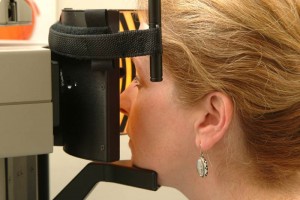Technology and Techniques
Understanding Your Surgical Options for Vision Correction
 When you are considering surgery to improve your vision, you need to know about all your options. First of all, it’s important to understand that there are a variety of procedures available, but they aren’t necessarily interchangeable. Surgical solutions such as LASIK, PRK, cataract surgery, refractive lens exchange, and Phakic lens replacement are designed to treat specific issues. It’s also vital to know which surgeries are available at each clinic you are considering. Some clinics specialize in only one type of operation.
When you are considering surgery to improve your vision, you need to know about all your options. First of all, it’s important to understand that there are a variety of procedures available, but they aren’t necessarily interchangeable. Surgical solutions such as LASIK, PRK, cataract surgery, refractive lens exchange, and Phakic lens replacement are designed to treat specific issues. It’s also vital to know which surgeries are available at each clinic you are considering. Some clinics specialize in only one type of operation.
At Boydvision, we offer five distinct treatments, to meet the broadest array of circumstances. This means we can perform a wider range of vision correction procedures and address the needs of as many prospective patients as possible. We also use advanced technologies for testing and performing these surgeries, to deliver the best possible patient outcomes.
Here’s an overview of two of the procedures offered by Boydvision and the equipment we use:
LASIK
The most common, and perhaps most well-known of the laser eye surgery options, LASIK stands for ‘Laser-Assisted in situ Keratomileusis’. This procedure is used to treat near or far-sightedness, astigmatism, and presbyopia (aging eyes). At Boydvision, we offer ‘custom’ LASIK, but we do it at the most affordable price in Canada. The benefit of the custom approach is that more information is gathered during the testing phase, so that a larger area of the cornea can be treated, without ‘ablating’ (removing) more corneal tissue. This significantly reduces the likelihood of side effects such as glare and image halos.
PRK
PRK (photorefractive keratectomy) differs from LASIK in that no flap is created to expose the cornea’s inner layers. As with our custom LASIK procedure, we offer custom PRK, gathering additional information beyond your refractive prescription, to treat a larger surface area of the cornea. Some of the reasons PRK may be the right procedure for you, as opposed to LASIK, include thin corneas, big pupils, or a job or hobby where injury to the LASIK flap is a risk. The downsides to PRK are the longer recovery period and potential for it to hurt more than LASIK.
For a more complete explanation of what to expect during LASIK or PRK surgery, please visit the procedures page of our website. In our next blog post, we’ll discuss cataract surgery, refractive lens exchange, and phakic implants.
Boydvision’s Technology
For testing your eyes for all of the above procedures, we use wavefront abberometry and corneal topography mapping. These tests help determine if you are a suitable candidate for a particular procedure and can sometimes also identify various types of corneal pathology. For the actual LASIK operation, an ansatome mechanical microkeratome (a very precise surgical instrument with an oscillating blade) is used to create the corneal flap necessary for the LASIK procedure.
While a newer laser microkeratome has become available on the market, Boydvision continues to use the proven Bausch & Lomb Hansatome microkeratome, widely considered the gold standard in microkeratomes. It delivers essentially the same results as the much-publicized femtosecond laser microkeratome at a lower cost to the patient and also makes it easier to re-lift the flap if retreatment is advised. We continue to monitor the development of laser keratomes and may make the switch when we feel the surgical benefits and/or cost reach a point where patients are better served by this newer technology.
Ready to find out which procedure is most suitable for your vision correction needs. Our free exam and consultation is a fast, no obligation way to help you make this important decision. Please give us a call or book your consultation online to arrange an appointment.
